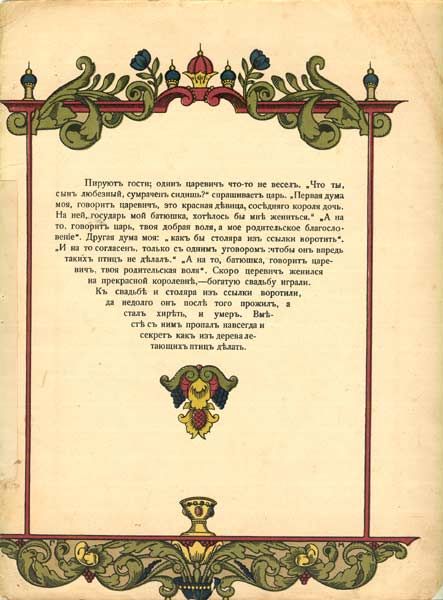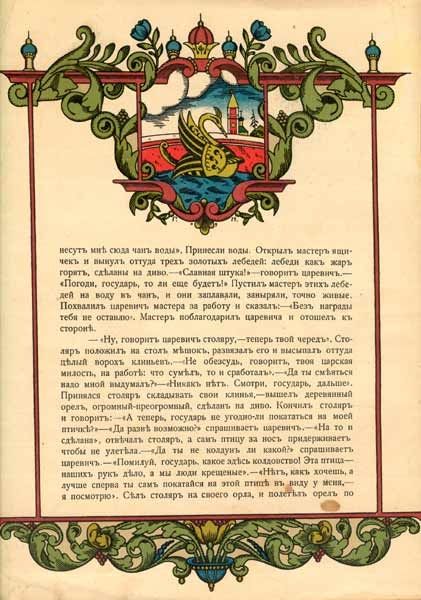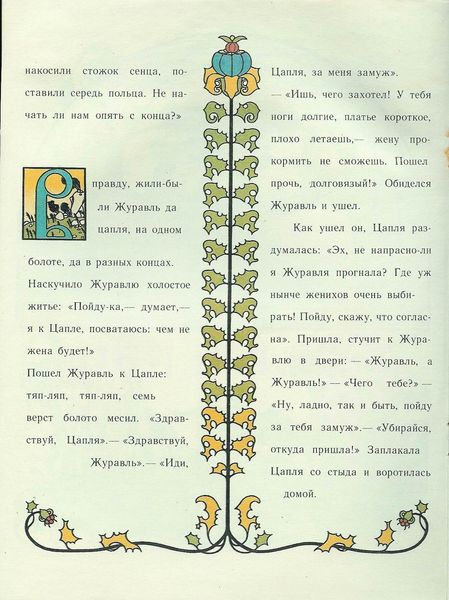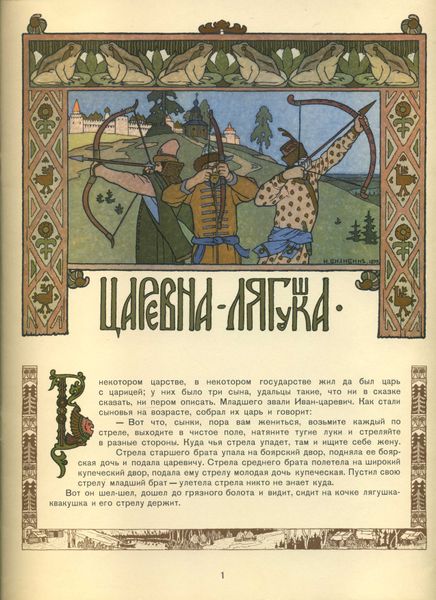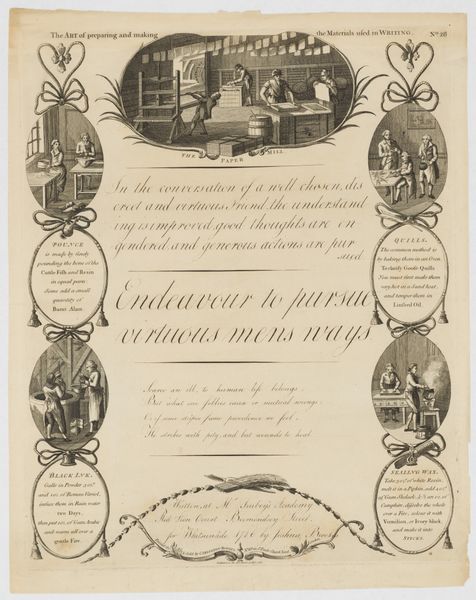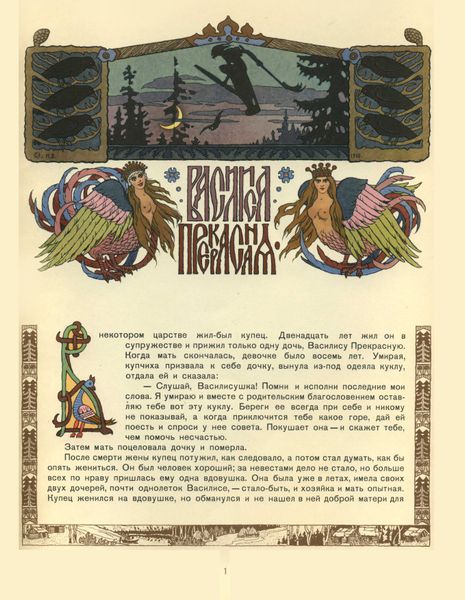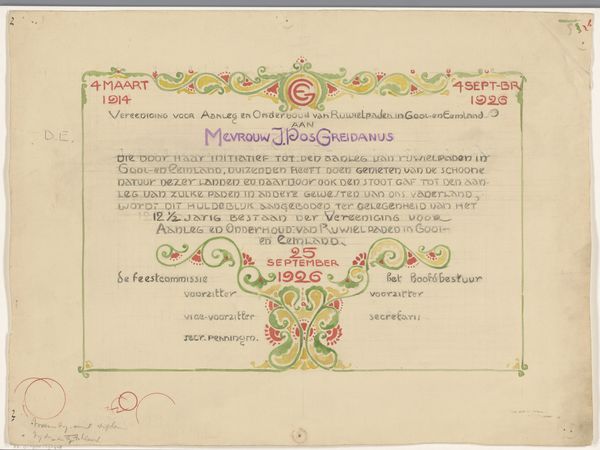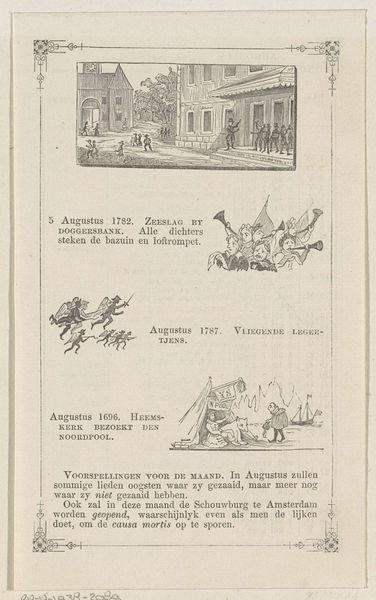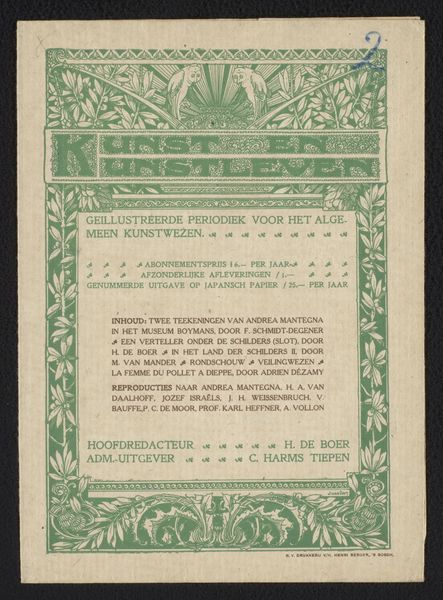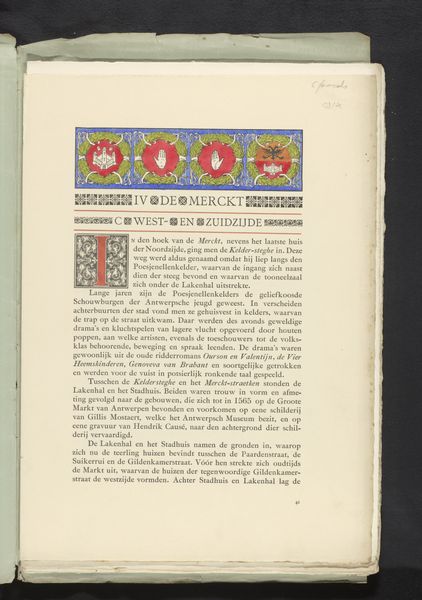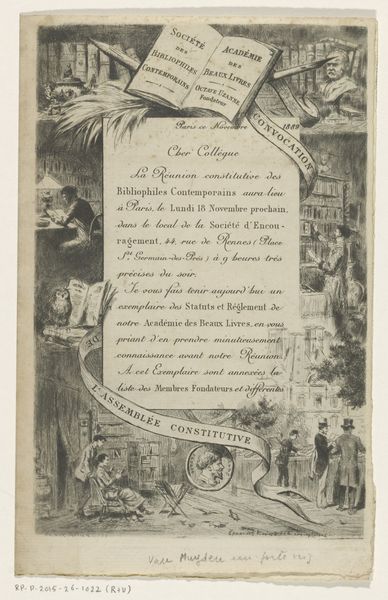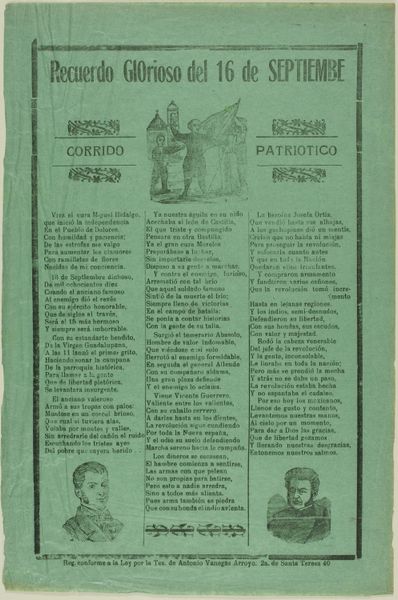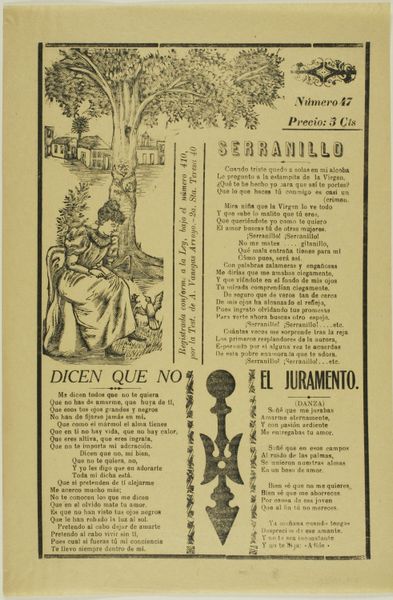
#
narrative-art
#
story telling
#
page layout composition
#
fantasy-art
#
text
#
folk-art
#
mythology
#
russian-avant-garde
#
page layout
Copyright: Public domain
Curator: Look at this captivating illustration, titled "Illustration for the Russian Fairy Story 'Maria Morevna'," created around 1900 by Ivan Bilibin. It is truly fascinating how the visual and textual elements harmonize to evoke a fantastical world rooted in Russian folklore. Editor: My initial impression is that it feels so balanced. The color palette is gentle, almost pastel, creating a sense of tranquility, and the decorative borders, enclosing the landscape and text, remind me of Russian icon paintings. The way symbols have been used within the artwork reflects a deeply held tradition of imagery and symbolic visual narration of storytelling, similar to how we use stained-glass illustrations to understand bible stories. Curator: Indeed. Bilibin, associated with the Russian Avant-Garde, strategically drew on traditional folk art. His rendering invites us to investigate Russian identity at the time of its making—marked by modernization and urbanization, on the one hand, and an intensified desire to preserve an authentically Russian culture on the other. What seems idyllic and naive may be symptomatic of political ideologies or historical grievances. The choice of representing an antiquated past creates its own social commentary. Editor: Right, and even on the surface, many may be lost on viewers. Take, for instance, the illustration atop the text block, what does the architectural building and raven mean? What parts do they play in Russian history and cultural interpretations? How did audiences in the 1900s internalize and recognize them, in relation to the fable? Or the font styles, what makes it uniquely recognizable? How much did literacy play a role in accessing the narrative and understanding of Bilibin’s choices, beyond a visual enjoyment? These decisions make the piece rich with cultural symbolism. The narrative itself and its telling visually—with the raven, architectural composition, stylized typeface—it's clear that all these work together as signifiers of Russia’s visual storytelling. Curator: It raises questions of who is the 'intended audience'. Access to fairytales as carriers of political messages were not equally distributed across society, and neither were the values that it represented. But regardless, its impact on constructing Russian self-perception in a time of revolution seems significant, no? Editor: It does make you think, who did this truly serve? What underlying cultural narrative of heroism and national values were embedded within it, or trying to elicit from audiences? It’s far more intricate than a children’s tale—more layered and powerful than just images. It invites one to seek interpretations across Russian memory and history. Curator: Absolutely, Bilibin's art reminds us of art’s complex involvement with society, of the visual languages we use to frame ourselves, our pasts, and even our futures.
Comments
No comments
Be the first to comment and join the conversation on the ultimate creative platform.
